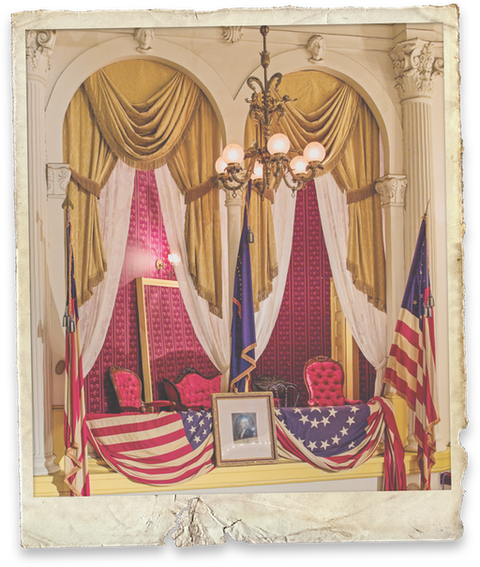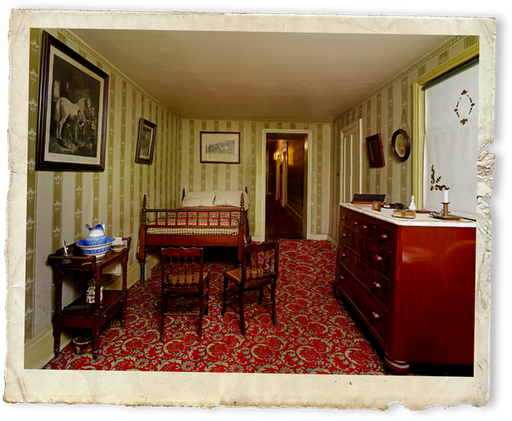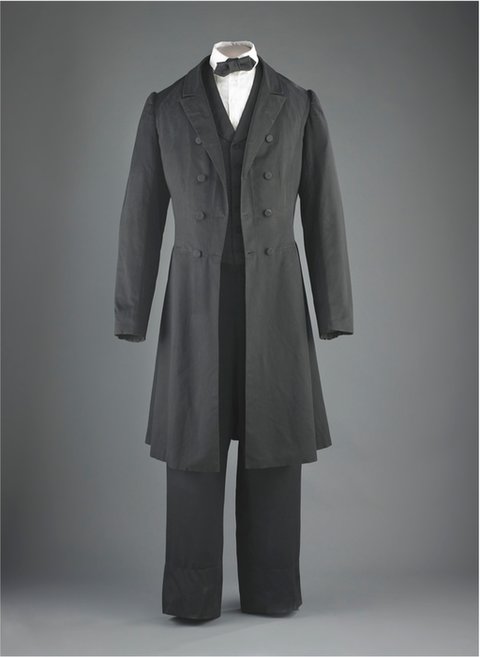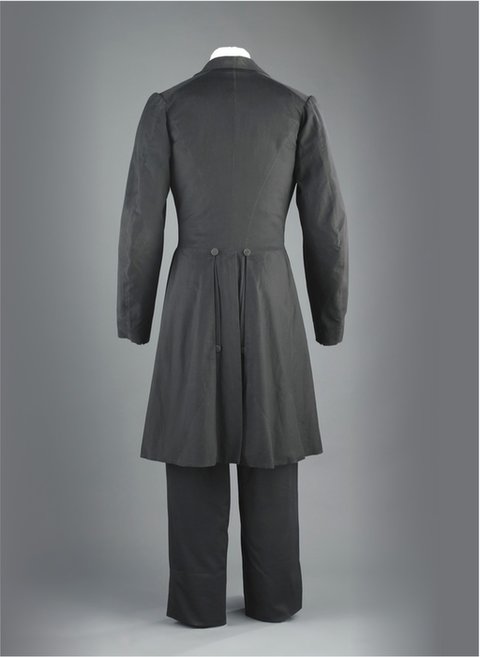ToProtectandPreserve
Toprotectandpreservesuchvaluableitemsisabigresponsibility. Curatorsknowtheriskstoitemsliketheeagleflag.Sunlight,forexample,canfadecolorsandbreakdown fibers.

flag
That’swhycuratorspreservetheflagunderglasstoblockultravioletlight.Framingtheflagalsohelpskeepitflat.Foldingaflagcouldcreatelastingcreases.Otherdangerscomefromtheenvironment.Dirt,dust,bodyoils,andotherpollutantscanharm objects.
That’swhycuratorsusewhitecottonglovestohandleanyartifact.Curatorsalsohavetoworryaboutpestsnibblingonartifactsorbuildingnestsinthem.Changesintemperatureandhumiditycanleadtomold,mildew,orrust.So,allartifactsarekeptinacontrolled environment.
NationalParkServicemuseumcuratorKamalA.McClarinwearscottongloveswhenhehandlesartifactsliketheflagfromthepresident'sboxatFord's Theatre.
tear
ThePathtoPreservation
Insomecases,artifactscomeintoamuseum’scollectionquickly.Inothercases,manyyearscan pass.
AfterPresidentLincolnhadbeenshot,hewascarriedtothehomeofWilliamandAnnaPetersen.There,hewaslaidonabed.ItwasinthebedroomofayoungarmyclerknamedWillie Clark.
Doctorsattendedtothewoundedpresident.Yet,at7:22a.m.,AbrahamLincolndiedfromhiswound.WhenClarkreturnedthenextmorning,hisroomwasinshambles.Thepresidenthadbeen removed.

bedroomatPetersonHouse,locatedacrossthestreetfromFord's Theatre
WillieClark'slettertohissisterhasbeencarefully preserved.
Fourdayslater,Clarkwrotealettertohissister,Ida.Hewrote:“Sincethedeathofourpresidenthundredsdailycallatthehousetogainadmissionintomy room....Everybodyhasagreatdesiretoobtainsomemementofrommy room....”
Clarkhimselfsenthissistersomethingofgreatvalue.Hewrote:“EnclosedyouwillfindapieceoflacethatMrs.Lincolnworeonherhead...Itisworthkeepingforitshistoricalvalue.”Thelacedisappeared,buttheletterremained.Morethan100 yearslater,itwasdonatedtoFord’sTheatre Museum.
AbrahamLincolnworethiscoat,vest,andtrousersashisofficesuitwhilehewas president.

ExhibitshowingthecoatAbrahamLincolnworethenighthewas assassinated.
Clark’sletterisafirst‑handaccountofwhathappened.Itisknownasaprimary source.That'sanysourceofinformationthatwascreatedatthetimeunderstudy.JohnWilkesBooth’sdiaryisalsoaprimarysource.ItistheonlysourcethatrecordsBooth’sthoughtsatthe time.
TheFord’sTheatrecollectionisfullofinterestingartifacts.YoucanseetheclothesLincolnworetothetheaterthatnightandmanyotherimportantobjects.Thesepiecesofourpasthavebeenpreservedandprotectedsothatpeoplecanseeandconnectwiththem today.
Tofindoutmore abouttheartifactsatFord’s Theatre,gotowww.fords.org
TolearnmoreabouttheNationalParkService’sMuseumResourcesCenter,gotowww.nps.gov/orgs/1802/
MyCareer
WhennothandlingartifactswithhiswhiteglovesattheMuseumResourcesCenter,KamalMcClarincanbefoundatdifferenthistoricsitesintheWashington,D. C.,area.McClarinservesasaninterpretiverangerwiththeNationalPark Service.
It'shisjobtohelpvisitorsmakeapersonalconnectionwithhistoricplacesandpeople.He'softenworkingatthehomeofFrederickDouglass.Douglasswasaformerslavewhobecameanabolitionist.HepressedPresidentLincolnforequalityforallpeople.McClaringivesvisitorsasenseofhowDouglasslivedand worked.


